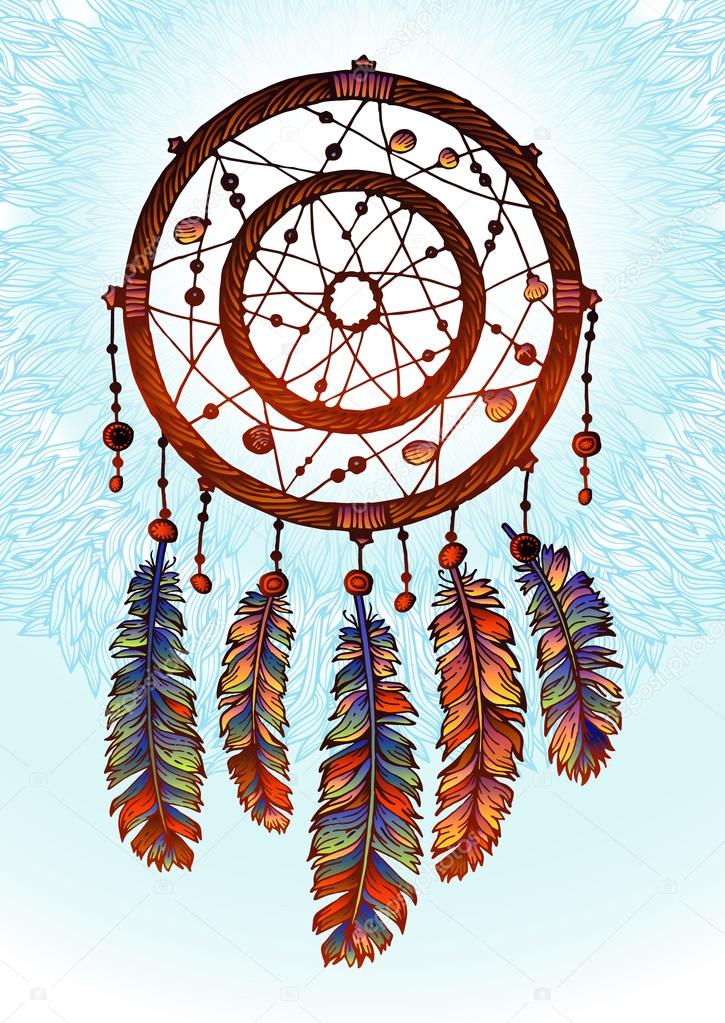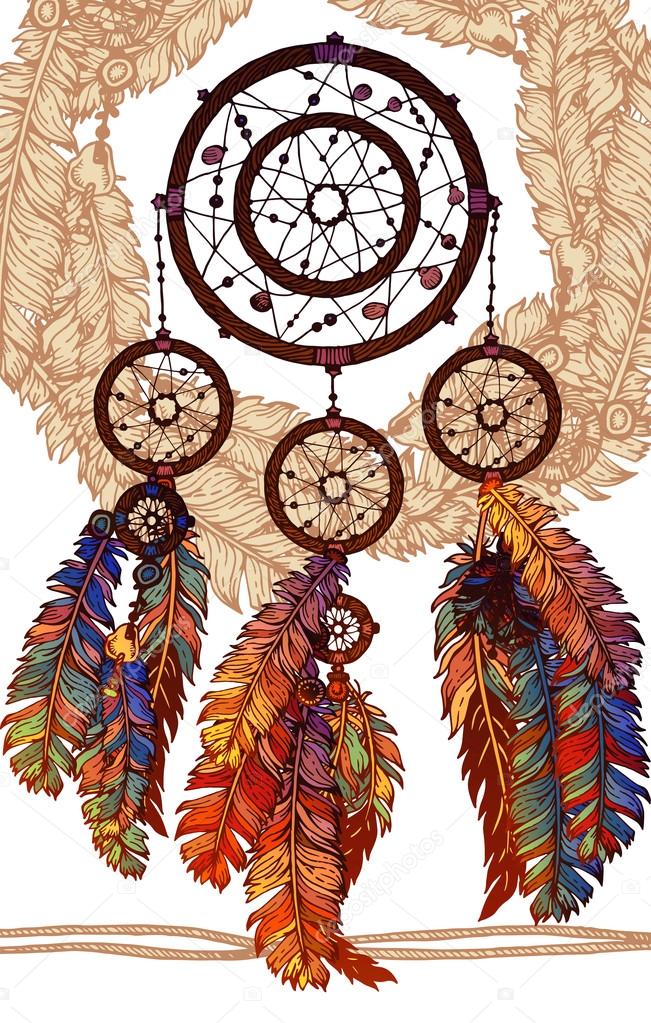American Indian Dream Catcher


- Many Ojibwe lodges had a dream catcher hanging above the family’s sleeping area in order to filter bad spirits from all of their dreams. As intermarriage and trade contact with other tribes increased, the concept of dream catchers spread to nearby tribes such as the Lakota who, over time, developed their own traditions.
- Many Ojibwe lodges had a dream catcher hanging above the family’s sleeping area in order to filter bad spirits from all of their dreams. As intermarriage and trade contact with other tribes increased, the concept of dream catchers spread to nearby tribes such as.

Celebrated for their striking geometric spider-web design, the dream catcher was originally the product of Ojibwe Indian culture, as a means of ultimate talismanic protection. Its origins lie in Ojibwe legend, which tells of a Spider Woman who protected their people from evil forces. The dream catcher was created to honor this legend, designed as a symbolic means to snare evil forces and particularly bad dreams.
The story about Native American dream catchers says that the web will capture all of the good dreams and let the bad dreams go out through the hole. Dream catchers were thought to have originated with the Ojibwe tribe, also known to many as the Chippewa Indians. And there are many stories about how the.

Dream Catchers For Sale
The creation of a dream catcher traditionally begins with a hoop constructed from willow. On to this hoop a loose, woven mesh, akin to a spider web, of fiber made from either animal tissues or plant materials. Following this weaving, the catcher is decorated with both symbolic and sacred objects, such as feathers or beads. Later spread to other tribes, the dream catcher is recognized today as a powerful and persevering symbol of American Indian history that continues to delight.
Quick Facts
American Indian Dream Catcher History
- In the Ojibwe language, a dream catcher is referred to as a “asabikeshiinh,” which translates roughly to “spider”
- Though the dream catcher carries far back into Ojibwe lore, the first mention in print of their existence was made in anthropologist Francis Densmore’s “Chippewa Customs,” published in 1929
- While the connotations of dream catchers lead to many being suspended over or near beds, they can also be given a symbol of general good luck upon events such as marriage
There are currently no items in American Indian Dream Catchers. Please click another category to see additional items.